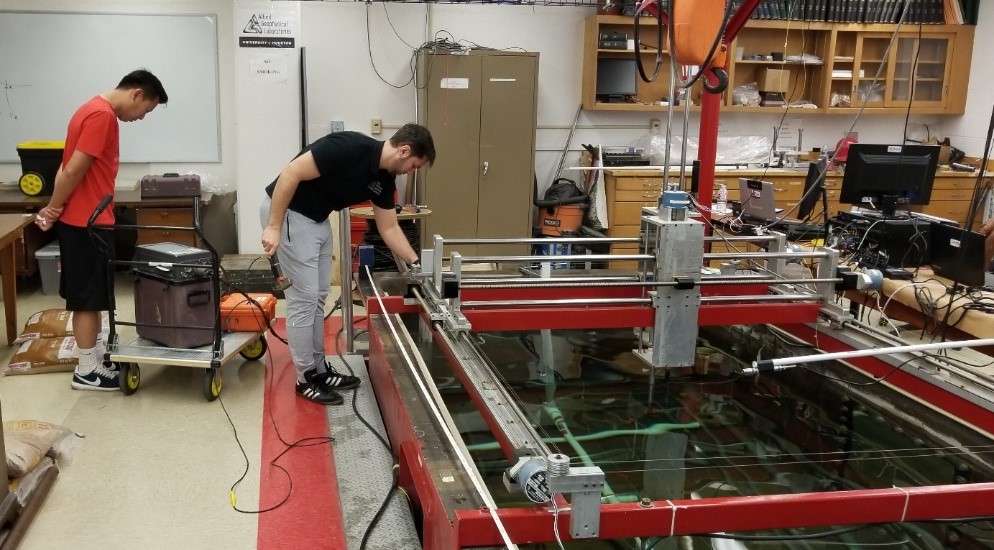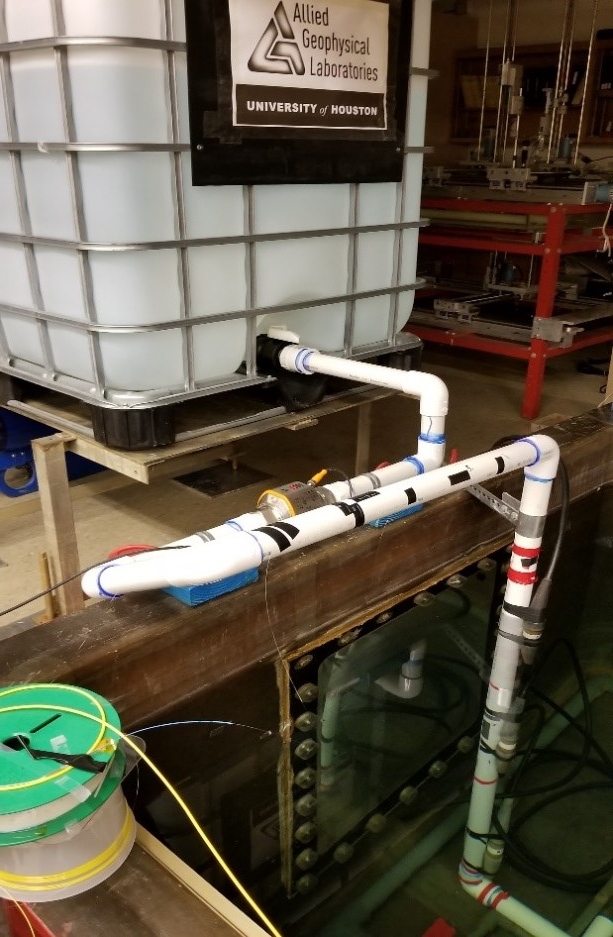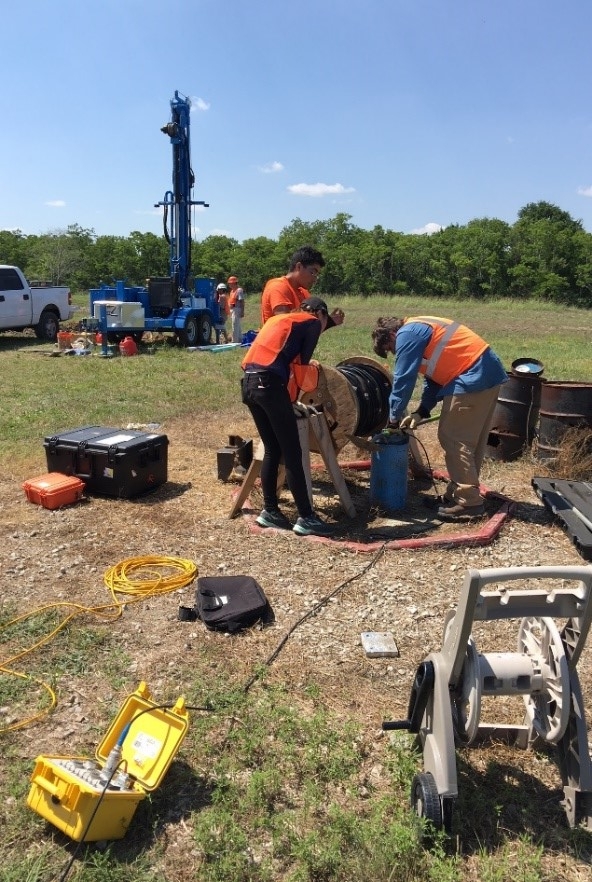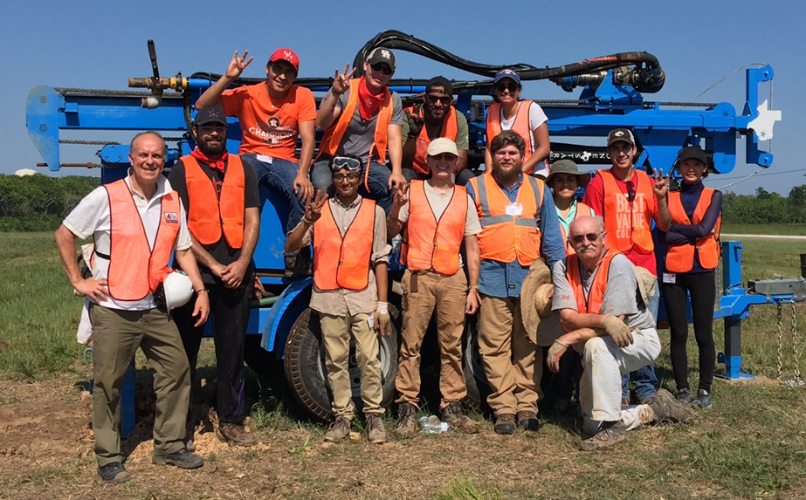Fiber-optic Seismic Systems (UPDATE) Investigator: Robert Stewart
The Gulf of Mexico region, both onshore and offshore, hosts a vast array of energy-related infrastructure. There are many needs attached to this resource industry including exploration for new energy sources, monitoring of existing infrastructure, and optimization of production. Dr. Robert Stewart and his research team have been developing fiber-optic vibration sensing systems to assist with subsea challenges. Fiber-optic sensing promises to deliver more data with complete and continuous coverage for safer and better-advised marine exploration, production, and overall operations at a lower cost

Figure 1: Fiber-optic systems project staff member, L. Chang, and Ph.D. student, E. Alfataierge,
adjust apparatus in the marine test tank in the Allied Geophysical Lab.
In the Allied Geophysical Lab with the support of the Subsea Systems Institute, the research team has undertaken a wide variety of experiments with both conventional geophysical sensors (hydrophones and geophones) as well as two fiber-optic systems (Fiber Bragg gratings and distributed acoustic sensors, DAS) in their scaled marine facility (Figures 1, 2 and 3). The results of these experiments indicates a relation between the fiber responses to flow parameters, in addition to characterizing seismic sources with both FBG and DAS sensors.
The tests include variable flow in pipe monitoring and seismic source evaluation. The team also configured optical fiber in a cable and drilled a shallow test well at their test site (the UH Coastal Center) near La Marque, Texas (Figures 2, 3 and 4). They will install the fiber to conduct sensitivity and imaging tests this summer.

Figure 2. On the left is the flow tank and pipe with FBG, DAS, and hydrophone sensors attached.
Experiments have been conducted to characterize flowvia vibration response.

Figure 3: The photo on the right, from a set of tests in May, 2018, shows emplacing hydrophone sensors
in a well to image the nearby coastal sediments.
In addition, we have drilled a shallow well (rig in the background) to install the fiber-optic sensors.

Figure 4. Borehole sensing team with drill rig employed in creating the shallow well (May, 2018) to emplace the fiber-optic sensors.